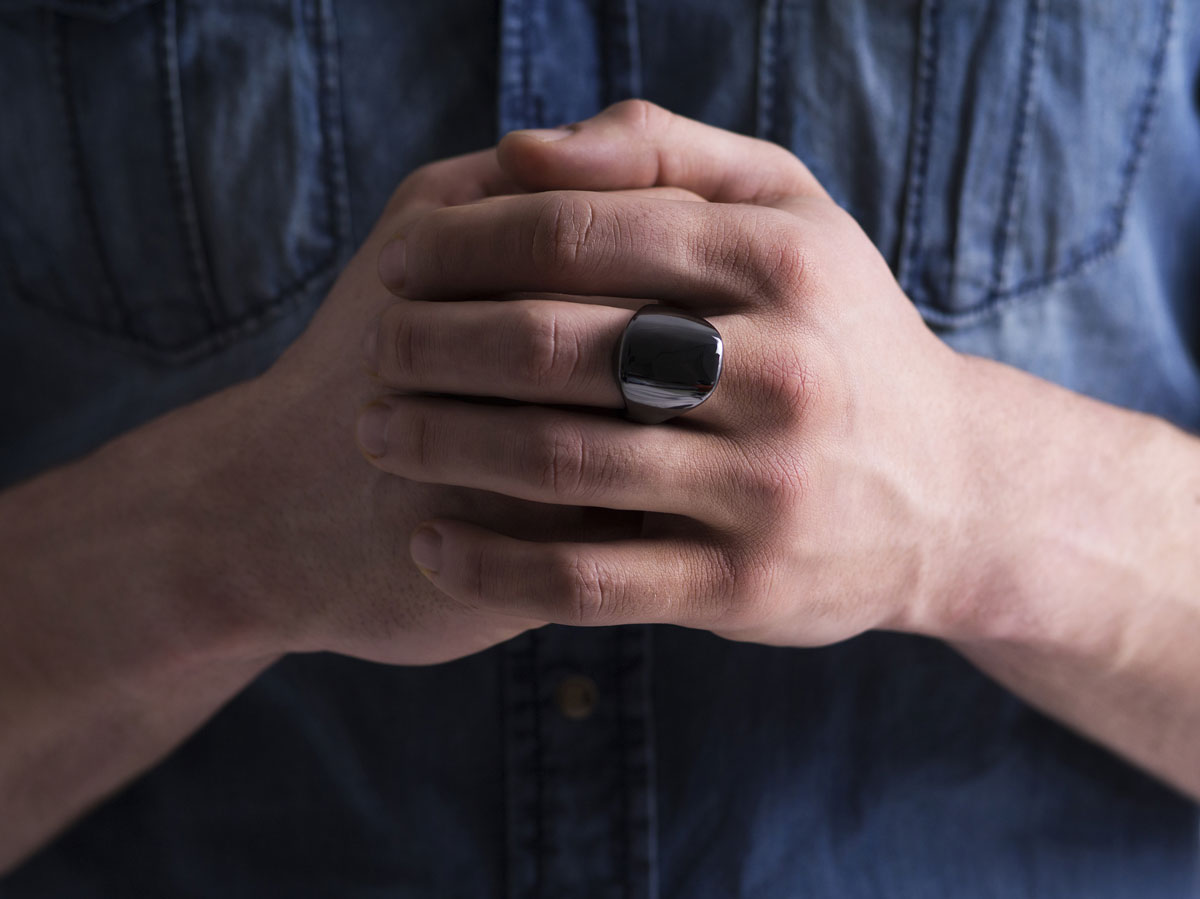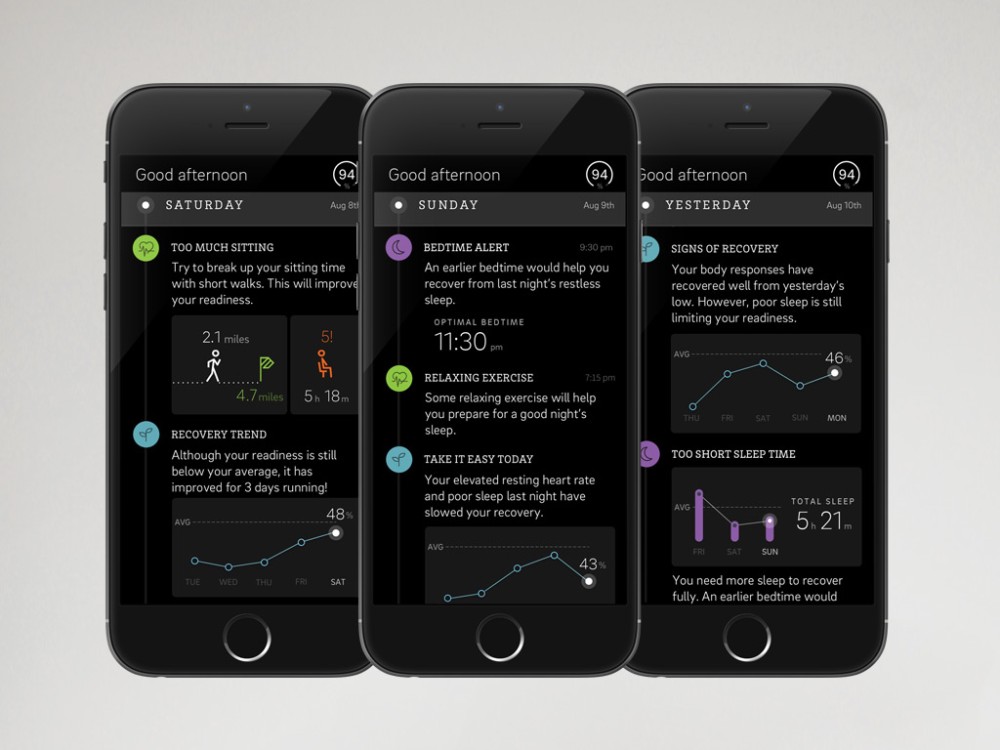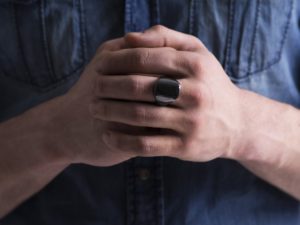
Our bodies are remarkably resilient, but we all have our breaking points, and it’s vitally important that we understand our limitations. There are many ways to tune into our bodies (meditation; sitting still; prioritising time for relaxation, laughter and fun for example), and our bodies will also send us signals. For example, body temperature and resting heart rate are good indicators of health, but we’ve become very adept at ignoring those signals and allowing our busy lives to take over. We don’t realise we’re depleted in energy until we get sick, chronically fatigued or worse, start to burn out.
As well as resting heart rate and body temperature, there is another variable that can be easily measured and is an excellent indicator of health. It’s called heart rate variability (HRV).
Heart rate variability
Contrary to popular belief, a healthy heartbeat shows remarkable variation among the time intervals between heartbeats – this is called the inter-beat interval. Heart rate variability (HRV) consists of periodic and aperiodic changes in the duration of cardiac cycle. In other words, a healthy heart will have variability between heart beats – not a consistent inter-beat interval. The clinical significance of this was first observed in a hospital, when it was noticed that fetal distress was preceded by alterations in heart beat intervals before respective change occurred in heart rate itself (Task Force, 1996). Lack of HRV is also associated with higher cardiovascular mortality. Overall, High HRV is an indication of cardiovascular and autonomic health as well as general fitness.
Among practical use, HRV is a biofeedback tool for improved relaxation, and an indicator to a person’s recovery status. When a person is under physical or mental stress, parasympathetic activity decreases and sympathetic activity increases. (Parasympathetic activity is the classic rest and digest functions, whereas sympathetic activity is the classic fight and flight reactions. It’s healthy to be in both states but predominantly parasympathetic. Read this blog post for more). Once you enter a sympathetic nervous system state, heart rate increases and HRV decreases.
The importance of a high HRV score
Relaxation and recovery are particularly reflected in increased high-frequency component of HRV, which is an indication of increased parasympathetic nervous system activity. HRV is affected by a number of internal and external factors, such as age, hormones and lifestyle, and subsequently it is advisable to have your own established baseline as a reference. HRV tends to decrease with age. It also decreases when HR increases. At a given HR, women typically have a higher HRV than men. Sometimes HRV reacts earlier than HR, which makes it a particularly sensitive measurement.
How I measure HRV: the ŌURA ring
I’ve been wearing the ŌURA ring for over a year now and it provides me with some very valuable information. The ring itself is extremely durable but stylish. It can be worn on any finger on either hand, and you can wear it for sleep only – I choose to wear it 24/7 so I can benefit from the full range of data. The ring has surfaced data on resting heart rate and body temperature since it was launched, but more recently they have included HRV data and made this visible on the app. The ŌURA ring sits on user’s finger and determines inter-beat-intervals (IBI) optically. The methods used by ŌURA results in a very accurate reading, primarily because the ring is worn for long periods (as opposed to the 90 seconds suggested by most apps that use a heart rate monitor).

How it can help you make lifestyle changes
The ŌURA ring tracks your sleep (it is the most accurate sleep tracker on the market and has been evaluated against ECG readings), including detailed information about your sleep cycles, sleep latency (time taken to fall asleep), sleep duration and body temperature. IT also records your activity, equating the type and intensity of your sleep into METS (units of exercise) and then cross-correlating this data to produce a readiness score, partially determined by nocturnal HR and HRV.
The readiness score is how I determine my activity levels and intensity for the day. If my readiness is below 80% I will make a conscious effort to eat more vegetables to support my lowered recovery levels, and I will reduce the intensity of my planned exercise sessions and create more breaks in the day. If my readiness is between 80-90%, I might try and fit a little more in, or take up the intensity of my exercise sessions. If my readiness is 90% or above. It’s a good day to get more done and push harder. The ŌURA ring removes the guesswork for me about how to plan my day and allows me to understand the signals my body sends me.

For many of us, we’re flying blind when it comes to managing our lifestyles. We aren’t as connected with our bodies, and technology has significantly increased our pace of life. What I love about the ŌURA ring is that we can use technology to counter that and get control back. The body keeps the score. Everything that you do that causes the body stress – exercise, relationship problems, a hectic job, smoking or alcohol consumption – leaves it mark and contributes to the overall load you’re carrying. Unless you take proactive steps to mitigate this stress, then it builds up and leads to longer term problems.
Interested in the ŌURA ring?
You can purchase the ring with a 10% discount using the code ‘bodyshot2017’. Use this custom link and ŌURA will ship you sizing rings so you can determine your size. The ring is available in mirror black and arctic white, and the lead time is typically 2-3 weeks.
Worried about your stress levels?
Then this is the best tip I can give you: put equal importance on your recovery as you do your training- whether that’s work or exercise. It’s about balance. Take our Health IQ quiz and book a 30-minute consultation with one of our health experts. Click here to take the test.
Here are some related blogs that will be helpful if you’d like to find out more.
Why recovery is as important as training
7 Secrets of a successful health transformation
The Six Signals™
We’ve identified the main issues that clients typically struggle with: Sleep; Mental Health; Energy; Weight; Digestion and Fitness. At Bodyshot, we call these the Six Signals™. A client will have red flags going up in one or more of these areas – usually two or three. If you are struggling with any of these issues, please email us at info@bodyshotperformance.com or take our Health IQ test to find out how you score.
Leanne Spencer is an entrepreneur, coach, TEDx Speaker, author of Remove the Guesswork, and founder of Bodyshot Performance Limited. Bodyshot is a health and fitness consultancy that helps busy professionals get more energy by removing the guesswork around their health, fitness and nutrition. Visit www.bodyshotperformance.com or email info@bodyshotperformance.com to register your interest in our services and connect with us on Facebook, Instagram and Twitter.


